Although they were forced out of it, they still hope to return. While they wait, they’ve decided to innovate for their dear Palestine.
Lots are those who are dreaming of Palestine, its soil, air, water, and olive trees. They even dream of a tent on that holy land.
Although they were forced out of it, they still hope to return. While they wait, they’ve decided to innovate for their dear Palestine. They became pioneers in writing, painting, singing , sciences, and medicine, among other fields.
Creative Cartoonist Naji Al-Ali Draws Refugee’s Injuries
Naji al-Ali was born in 1938 in the northern Palestinian village of Al-Shajara, between Tiberias and Nazareth. He was forced to leave his country to the south of Lebanon with his family after the 1948 Palestinian Catastrophe (Nakba) and lived in Ain al-Hilweh refugee camp near Sidon.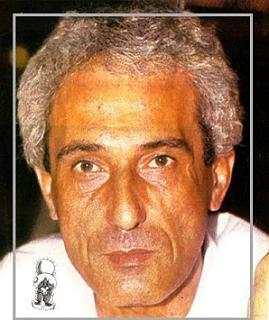
He moved to Beirut, where he lived in a tent in the Shatila refugee camp and worked in various industrial jobs. In 1957 he travelled to Saudi Arabia, where he worked for two years.
In 1959 Naji returned to Lebanon and joined the Arab Nationalist Movement (ANM), but was expelled four times in one year for lack of party discipline. Between 1960 and 1961, along with comrades from the ANM, he published a handwritten political journal Al-Sarkha ('The Outcry').
In 1960, he joined the Lebanon Academy of Arts, but was unable to continue his studies there as he was imprisoned for political reasons soon afterwards. After his release he moved to Tyr, south of Lebanon, where he worked as a drawing instructor in the Ja'fariya College.
In 1963 Al-Ali moved to Kuwait. There he worked as an editor, cartoonist, designer and newspaper producer for the Arab nationalist Al-Tali'a newspaper.
From 1968 on he worked for the Kuwaiti daily As-Siyasa. In the course of these years he returned to Lebanon several times. In 1974 he started working for the Lebanese newspaper As-Safir, which facilitated his return to Lebanon for longer periods.
During the Israeli invasion of Lebanon in 1982, he was briefly detained by the occupation forces along with other residents of Ain al-Hilweh refugee camp. In 1983 he returned to Kuwait to work for the Al-Qabas newspaper, and in 1985, Al-Ali moved to London where he worked for its international edition until his death.
He published three books about his cartoons, in 1976, 1983 and 1985, and was preparing another at the time of his death.
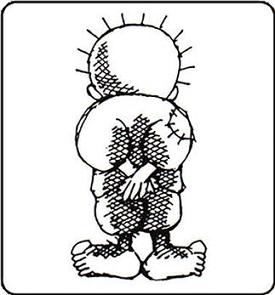
In 1979, Al-Ali was elected president of the League of Arab Cartoonists. In 1979 and 1980, he received the first prize in the Arab cartoonists exhibitions held in Damascus. The International Federation of Newspaper Publishers awarded him the "Golden Pen of Freedom" posthumously in 1988.
He created the character Handhalah, who was depicted as a ten-year old boy, and appeared for the first time in the As-Siyasa daily in Kuwait in 1969. The figure (Handhalah) turned his back to the viewers from 1973, and clasped his hands behind his back. The artist explained that the ten-year old represented his age when forced to leave Palestine and would not grow up until he could return to his homeland; his turned back and clasped hands symbolized the character's rejection to outside solutions. In later cartoons, Handhalah got to actively participate in the caricature’s subject not only observe it.
Handhalah then became the signature of Naji'Al-Ali’s cartoons and remains an iconic symbol of the Palestinian identity and defiance.
Other characters in Al-Ali’s cartoons included Fatima and her husband. Fatima symbolized the strong and defiant Palestinian woman who didn’t agree to make peace with the invaders. Her husband was a thin, hard-working man.
There were also two more characters, a thin, miserable-looking man representing the Palestinian as the defiant victim of Israeli oppression and other hostile forces, and a fat man representing the Arab regimes and Palestinian political leaders who led an easy life and engaged in political compromises which the artist fervently opposed.
July 22, 1987, while outside the London offices of al-Qabas newspaper, Naji Al-Ali was shot in the face. He remained unconscious in the hospital until his death on 29 August 1987.
“Prince of Poets”: Tamim Bargouthi 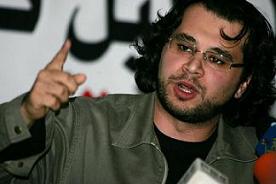 In 1977, Tamim Bargouthi, a Palestinian poet and political scientist, was born in Cairo. He comes from a lineage that is well known in Arabic literature. His father is the Palestinian poet Mourid Barghouthi, and his mother is the Egyptian novelist and scholar, Radwa Ashour.
In 1977, Tamim Bargouthi, a Palestinian poet and political scientist, was born in Cairo. He comes from a lineage that is well known in Arabic literature. His father is the Palestinian poet Mourid Barghouthi, and his mother is the Egyptian novelist and scholar, Radwa Ashour.
He obtained a B.A. in Political Sciences from the University of Cairo in 1999, and specialized in International Relations at the American University of Cairo, from which he graduated in 2001. He received a PhD in political sciences from the Boston University in 2004, and became an assistant professor at the American University of Cairo in 2005.
Tamim was well known as he delivered poems for al-Quds during the “Prince of Poets” program, broadcast by Abu Dhabi Channel.
He has written four poetry collections: Meejana (Ramallah 1999), Al-Manzar (Cairo 2000), Qaluli Bethebb Masr (Cairo 2005), and Maqam Iraq (Cairo 2005). He is also the author of Benign Nationalism: Egyptian Nation State Building under Occupation (2007) and has recently published a book entitled "The Umma and The Dawla: The Nation State and the Arab Middle East" (Pluto Press, 2008).
Between 1996 and 1997, he won the music prize of his faculty at the Cairo University. The faculty awarded him the poetry prize in 1998. During that same year, he won the poetry medal of the High Institute of Applied Arts. In 2000, he received the poetry prize of the Regional Cultural Foundation in Marrakesh, Morocco.
He is currently a visiting Assistant Professor at Georgetown University's Center for Contemporary Arab Studies, where he teaches on Comparative Politics of the Middle East, Arab nationalism, and Islamic political thought.
The Palestinian creativity wasn’t restricted within arts and poetry. However it exceeded to reach the sciences.
“Jenin” Carved in Stone Sent to Moon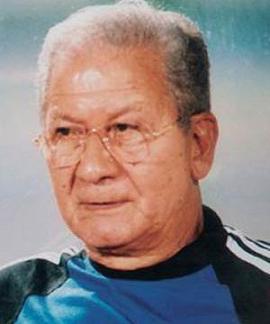 Issam Nemer, a Palestinian astronaut who had sent to the moon a stone with the name of his town, “Jenin” carved in it.
Issam Nemer, a Palestinian astronaut who had sent to the moon a stone with the name of his town, “Jenin” carved in it.
Nemer was born in 1926 in Jenin, where he has his elementary and secondary education. In 1949 he traveled to the United States of America to attend Uota University (University of the Arts) where he graduated in 1953 with a degree in engineering.
He continued his high education in the New York University where he received a PhD in Calculating Quantities. Then he worked at a pioneer missiles production factory in California.
After that, Nemer moved to work for NASA in Houston, Texas, where he led the experiment group of the moon spacecraft. He achieved several medals and certificates of appreciation.
In addition to these scientific achievements, Issam Nemer sent a small stone with the name of his hometown “Jenin” carved in it, with the Apollo 11 astronauts.
Political Palestinian writer, Hafez Touqan, said, in an essay published in the “Nablus” newspaper, that he had asked Nemer: “Why didn’t you write the name of Palestine”?
“He answered while laughing: so that the stone can reach the moon”, Touqan added.
And till now, the municipality’s library preserves an image, signed by Apollo’s astronauts, offered by Issam Nemer to the city residents in the first visit to his country following his travel.
Heredity Scientist: Doctor Ahmad Tibi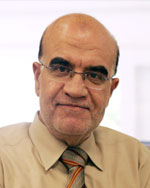 Doctor Ahmad Teebi, a prominent doctor in genetics field, especially in the Arab world.
Doctor Ahmad Teebi, a prominent doctor in genetics field, especially in the Arab world.
He is the Charge d’affaire of the genetic diseases data base in the Arab world. He is also reputed as a genetics teratology researcher.
Teebi now heads the department of clinical genetics in the Hospital for Sick Children (also known as SickKids Hospital) in Toronto. He is also the deputy chief and pediatrics professor in Weill Cornell Medical College in New York and Qatar.
Doctor Teebi prepared more than 200 researches in genetics field. He noted to 38 new types of genetic disturbances. He also made several researches based on Mendelian inheritance law. He was an editor in several magazines specialized in genetics in the US.
Doctor Teebi also wrote, along with Talaat Farag, a book, of 25 chapters, on the genetic disturbances upon the Arabs. This book was published in 1997 by Oxford University.
He shared in developing the genetics services in several Arab countries, like Gulf States, Jordan, occupied Palestinian territories, Egypt and Tunisia.
